From the tallest clock tower to smallest sand clock in Sri Lanka
Published
3 hours ago
on
September 5, 2020
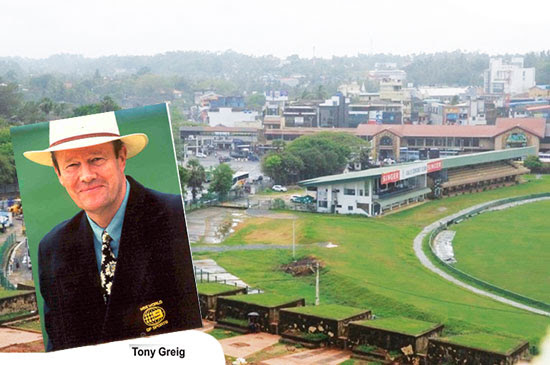
By Admiral Ravindra C Wijegunaratne
(Retired from Sri Lanka Navy)
Former Chief of Defence Staff
Galle is a fascinating place to work in. I was the Commander Southern Naval Area (Comsouth) from 3rd August 2008 to 10th August 2009. For me nothing was more refreshing than the early morning beach run on the world famous Unawatuna beach as well as the one-kilometer swim (before tourists invaded the beach).
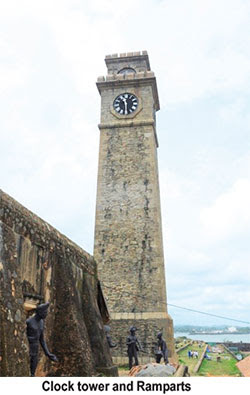
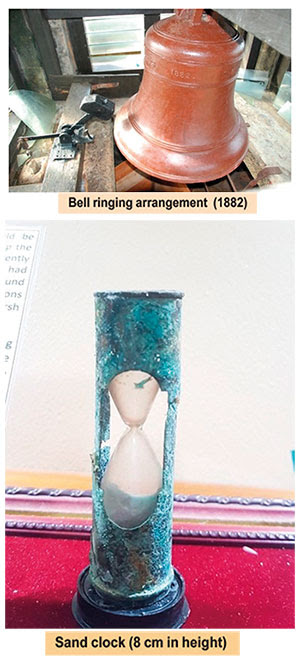
The Galle Clock Tower (or Dr Anthonisz Memorial Clock Tower) was built in the central moon bastion of Galle Fort, in 1883, and the clock was presented by Maha Mudaliyar Samson de Abrew Wijegunaratne Rajapakse of Kosgoda (1831- 1888) in appreciation of Dr PD Anthonisz, (1822 – 1903), who served as Colonial Surgeon in the Southern Province and had treated Maha Mudaliyar Rajapakse, a well-known philanthropist who donated three and a half acres of land in Colombo for the construction of Ceylon Medical College in 1875. The clock tower is 83 feet high and people could see the clock from the Galle town. The clock was made by John Moore and Sons, a well-known clock maker in London, in 1882.
I checked with the Galle Mayor at the time, what was wrong with the clock. He said it could not be repaired, and the Galle Municipal Council members were planning to replace the clock faces with digital ones. Various attempts to repair the mechanical clock had proved futile, and a reputed clock repair company had asked for a very large amount of money for the repair. As the Galle MC could not afford that amount, it had given up the idea of repairing the historical clock.
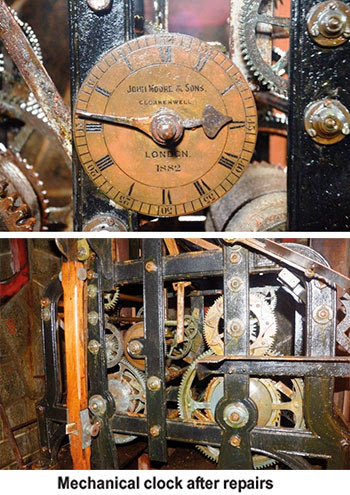
I requested Mayor to give the Navy a chance to try to repair the precious clock. Our engineers from the Southern Naval Command and a team from in our instrument repair workshop of the Naval Dockyard, Trincomalee had a careful look at the clock. It was sad that some brass parts of this 1883-UK built clock had been removed on the pretext of repairs. However, our team was determined to repair it.
Missing wheels and bars were manufactured in our workshops, and clock was put back into operation at a cost of just Rs 12,000! Swingers in the pendulum were replaced with ropes until proper wire rope was purchased. The clock became operational by 16th July 2009!
The Sri Lanka-New Zealand test match was played on 18th to 22nd August 2009. It was a memorable match for Sri Lanka as Mahela and Thilan Samaraweera scored centuries in the first innings (114 and 159 respectively), and Dilshan was not out on 123 in the second innings; Sri Lanka won by 202 runs. Muralidharan bagged seven wickets in the Match and Dilshan became the Man of the Match. The TV crews showed the clock tower with the clock working in precision and the commentator gave due credit to Sri Lanka Navy Engineers. Bravo Zulu to Navy Engineers! The Navy looks after the clock.
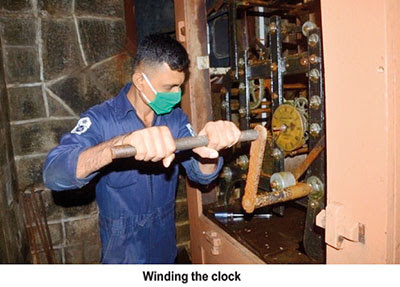
The officer who coordinated the clock repair project was Lieutenant (then) Buddhika Godakanda. He was a foreign-trained ship salvage diver. On 1February 12, 2009, he joined me in demarcating the protected areas, in the Great Basses reef, of ancient shipwrecks before the commencement of the diving season in April.
About 200 metres away from the famous silver coin shipwreck, he found a small glass object, approximately 10 centimeters long, and it looked like a torch bulb. When we brought it ashore and closely inspected after cleaning it, we found it was a tiny sand clock! It had not got damaged and could measure exactly 15 seconds in single run through.
Site where sand clock was found
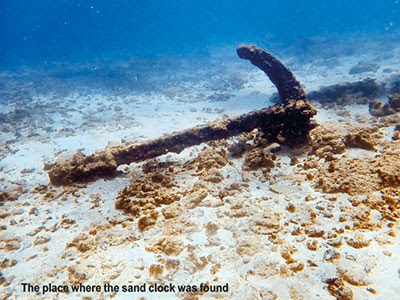
Sand clocks are thought to be more than 500 years old. (Mechanical clocks came into existence approximately 500 years ago.) As the silver coin shipwreck is 320 years old, this sand clock must have been from a ship much older than the silver coin ship, which sank in the area, where the Great Basses lighthouse was built about 300 years later. In astronavigation, taking timings in every 15 seconds as well as measuring the angle of star from horizon by using sextant is necessary to draw position lines on the chart to find out the ship’s position when the ship is away from the shore. This method of finding the position is known as ‘Rapid Sights’. Ancient navigators, especially, Arabs, were very competent in navigating ships by using stars. So, was the sand clock from an ancient Arab ship? Are there more ancient shipwrecks which have not yet been found? We do not know. Are there more mysteries like Mogul Emperor Aurangzeb’s silver coin ship? Only expeditions by maritime archeologists will provide answers.
Just imagine a tiny little glass sand clock remained intact even though the ship carrying it broke into pieces after hitting the reef in rough weather and sank to the bottom of the sea, where it lay until it was brought ashore by a Navy diver! It’s a miracle that the sand clock is still working!
This is an eye opener to us, the seafarers and mariners of this country. There is a pressing need to invest more on maritime archeology. The country needs many more marine archaeologists.
When we recollect these incidents, it gives us an immense pleasure. We have repaired a century old massive mechanical clock and recovered a small sand clock, probably the smallest of its kind to have been found in Sri Lanka.








No Comments